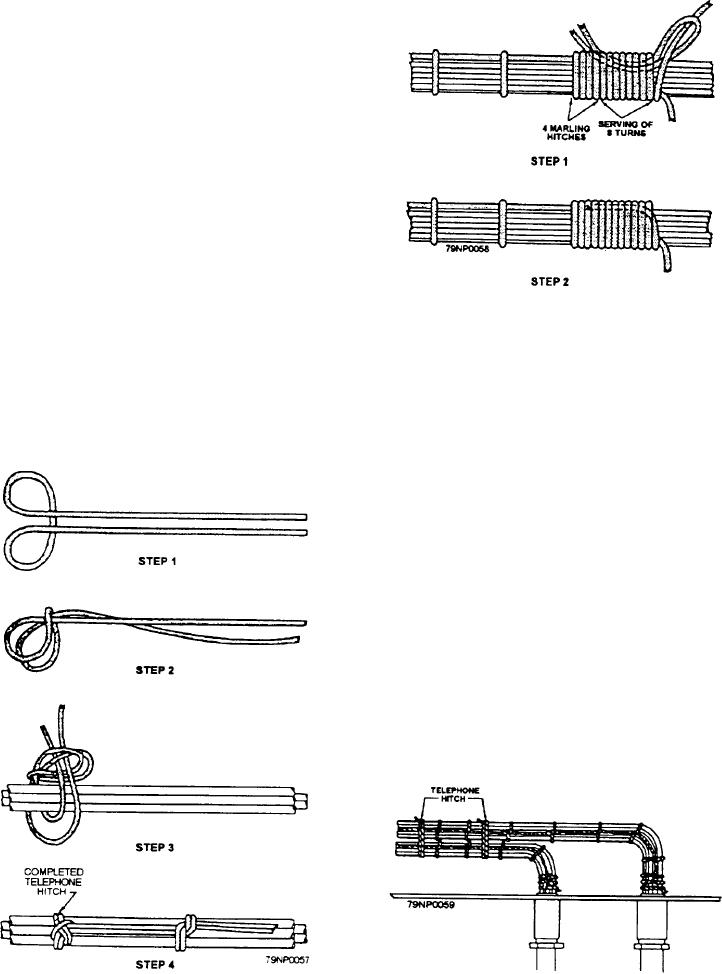
the lockstitch as shown in (fig. 2-9, view C). The lacing
is terminated with two lockstitches. Use the same
procedure when using a double wrap of lacing twine.
Place lockstitching immediately next to and on both
sides of breakouts that are to be laced. Anchor the lacing
of auxiliary lines and final breakouts to the main section
by passing the lacing twine through the two lockstitches
on the main section and then using the starting hitch and
knot (fig. 2-9, view A).
On cable sections 5/8 inch or smaller in diameter,
the space between the lockstiches must be 1/2 inch to
3/4 inch On cable sections larger than 5/8 inch in
diameter, the spacing must be 1/2 inch to 1 inch. On
cable sections larger than 5/8 inch in diameter, use a
double wrap of lacing.
Double lace is applied in a reamer similar to single
Figure 2-11.--The loop method of terminating the lace.
lace, except that it is started with the telephone hitch and
Lace the spare conductors of a multiconductor cable
is double throughout the length of the lacing (fig. 2-10).
separately. Then secure them to active conductors of the
You can terminate double as well as single lace by
cable with a few telephone hitches. When two or more
forming a loop from a separate length of cord and using
cables enter an enclosure, lace each cable group
it to pull the end of the lacing back underneath a seining
separately. When groups parallel each other, bind them
of about eight turns (fig. 2-11).
together at intervals with telephone hitches (fig. 2-12).
You should serve conductor ends (3,000 cm or
larger) with cord to prevent fraying of the insulation (fig.
2-13). When conductor ends are served with glass cord
colored for phase marking, make sure that the color of
the cord matches the color of the conductor insulation
CABLE MAINTENANCE
The primary purpose of electrical cable
maintenance is to preserve the insulation resistance. To
preserve the insulation resistance, you must know the
characteristics of the insulating materials used in naval
shipboard electrical equipment. You must also know the
factors that affect insulation resistance.
Figure 2-10.--Starting double lace with the telephone hitch.
Figure 2-12.--Binding cable groups with the telephone hitch.
2-14

